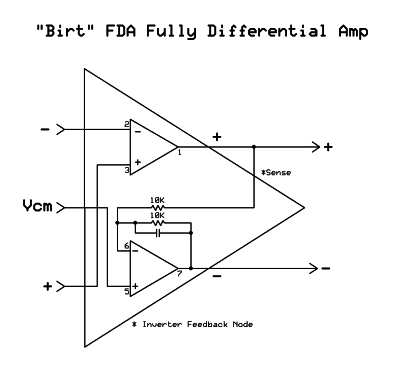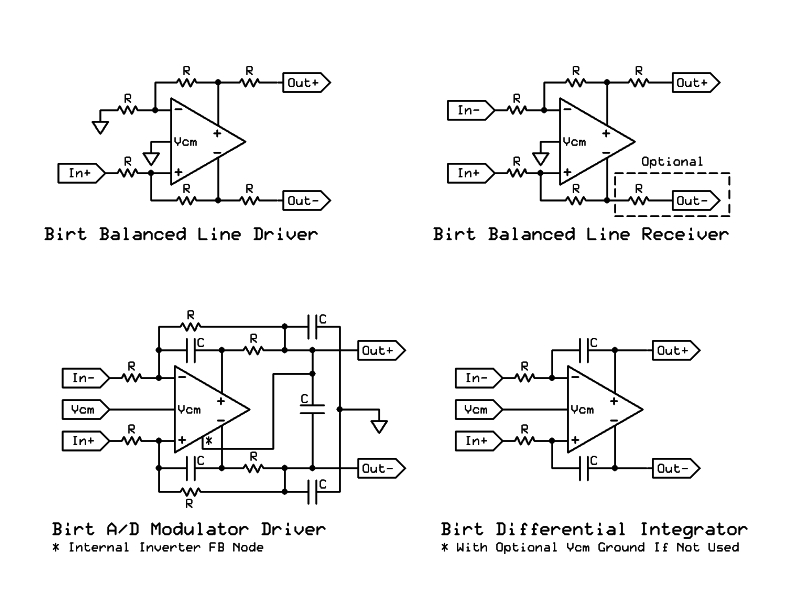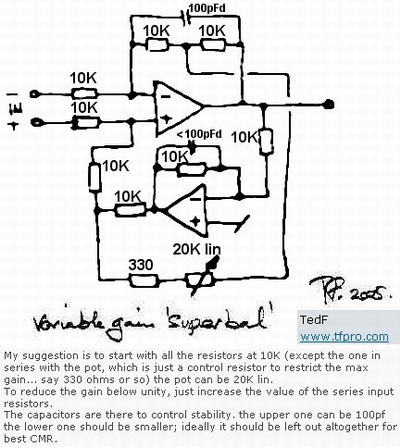user 133392
Well-known member
- Joined
- Dec 13, 2022
- Messages
- 300
I won't be using the DeBoo in the future: The DC accuracy is very poor without extremely precise resistors.When do you use the Birt integrator vs your Deboo integrator?
The DeBoo has a common mode gain of "1" so it floats to whatever the common mode voltage of its' inputs are. That's why I initially chose it for the Flying Rail Preamp.
I use both the Birt and the cross-coupled 124X/128X. The advantage of the cross-coupled 124X/128X is the precise resistor matching and no external resistors. The Birt has the advantage of looking like an FDA, has access to circuit nodes that are internal to a 124X/128X and can use lower-value resistors. Also the inverting op amp's noise contribution appears in the output in common mode. The Birt lends itself to being an A/D driver or FDA servo.
Last edited:
















